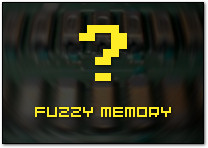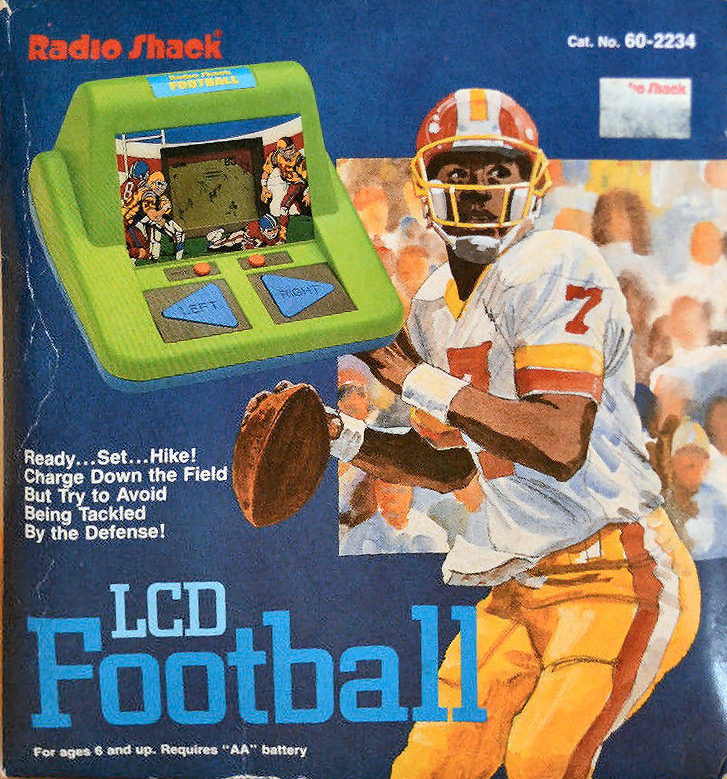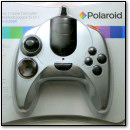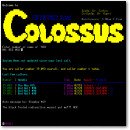Archive for the 'Retrogaming' Category
[ Fuzzy Memory ] Amstrad CPC Adventure Game
Tuesday, March 24th, 2015 Every once and a while, I receive emails from people looking for a certain game, electronic toy, or computer from their distant past. I then pass it on to intrepid VC&G readers to crack the case.
Every once and a while, I receive emails from people looking for a certain game, electronic toy, or computer from their distant past. I then pass it on to intrepid VC&G readers to crack the case.
The Clues
Marko writes:
I need help identifying adventure game for Amstrad CPC. I remember playing the game in the late 80’s (possibly ’88 – ’89, but the game itself could be older). I didn’t play it much though, possibly due to difficulty, but I do remember that I liked “mystery” feeling about the game.
Now for what I remember (and hopefully all this is correct). It is a text based (possibly had list of options / actions to select) and the story revolves around a group of people (possibly family?) being shipwrecked / having an accident at sea due to a storm. The game begins with telling the story about the incident. Now this is the part that I could be wrong about, but I think the player is tasked with either finding the people that were on the ship or finding about their history. Again, it is possible that that group of people is a family and possibly player’s ancestors.
In terms of graphics, game had black background, and I remember a lot of red colour / shades of red being used for drawings. At the beginning of the game, when the story is being told, I remember a picture of the ship which was drawn in red pen / outline.
This is all I can remember, I know its not much, and hopefully most of the facts above are correct – my memory of this game is very very hazy.
If your readers could possibly help with identifying the game in question, I would be really grateful – would love to try it again in an emulator.
Kind regards,
Marko
The Search Begins
It’s up to you to find the object of Marko’s fuzzy memory. Post any thoughts or suggestions in the comments section below. Marko will be monitoring the comments, so if you need to clarify something with him, ask away. Good luck!
—
Have a memory of a computer, video game, computer software, or electronic toy you need help identifying? Send me an email describing your memories in detail. Hopefully, the collective genius of the VC&G readership can help solve your mystery.
[ Retro Scan of the Week ] HI-RES ADVENTURE #4: Ulysses and the Golden Fleece
Monday, March 23rd, 2015Discussion Topic of the Week: What’s your favorite static-screen graphical adventure game of all time?
[ Retro Scan of the Week ] Tandy Memorex VIS
Monday, March 9th, 2015 CD-ROM ON YOUR MOTHER LOVIN’ TV!!
CD-ROM ON YOUR MOTHER LOVIN’ TV!!
Back in 2009, I made a list of the worst video game systems of all time for PC World, and the Tandy Memorex Video Information System (1992) was #2 on the list.
Six years later, I am not fond of dishing out bad vibes toward any game console. But the VIS was indeed an underwhelming commercial product.
And honestly, calling the VIS a video game console is a stretch. As more of a multimedia appliance than a straight up “video game system,” its lineage lay half-way between game machine and general purpose PC. Its designers intended it to run educational software as frequently as games.
For fans of odd an interesting systems, the VIS definitely stands out. Under the hood, it sported a modified PC architecture based on an Intel 286 CPU and a custom embedded version of Windows called “Modular Windows.” In addition, the VIS allowed storing data on removable memory cards that plugged into the front of the console (a feature that, in game consoles, arrived second only to the Neo Geo, I believe).
Of course, ever since I saw this section of a 1995 Tiger Software catalog (Tiger had apparently bought up a clearance stock of the machines — see also this scan of the Jaguar CD in a Tiger catalog), I wanted a VIS regardless of its faults. While I have used them before — including some in-store demos at Radio Shack — I still do not have one in my collection.
Discussion Topic of the Week: Did you own any CD-based game consoles from the multimedia console era? (i.e. CD-i, VIS, 3DO, CDTV, Jaguar CD)
[ Retro Scan of the Week ] Playing the Atari 800
Monday, March 2nd, 2015Steve Bristow (1949-2015)
Tuesday, February 24th, 2015 [The following news comes to us via video game historian Mary Goldberg, who has allowed VC&G to republish his Facebook announcement here so more people can see it. –Benj]
[The following news comes to us via video game historian Mary Goldberg, who has allowed VC&G to republish his Facebook announcement here so more people can see it. –Benj]
It is with a sad heart that we announce the passing of Atari legend and friend Stephen D. (“Steve”) Bristow, who died this past Sunday, February 22, 2015 at the age of 65 following a short illness.
Bristow was one of the originals, helping Nolan Bushnell out during the development of the world’s first commercial arcade game, Computer Space, while an intern at Ampex.
He then moved to Nutting Associates, the publisher of Computer Space, as an intern. At Nutting, he soon took over for Nolan Bushnell when Bushnell and business partner Ted Dabney left to form Atari.
In the early 1970s, Bristow joined up once again with Bushnell at Atari for a short while before being tapped to form secret Atari subsidiary Kee Games with Joe and Patricia Keenan. There, he lead the creation of several groundbreaking arcade games such as the full-color multiplayer Indy 800 and the seminal game Tank.
Bristow occupied many positions at Atari throughout the 1970s an 80s. Upon the merger between Kee Games and Atari, he oversaw Atari’s Coin Engineering as well as later projects like the Electronic Board Game Division. He later became Plant Manager of Pinball Production at Atari before moving to VP Engineering, Consumer and Home Computer Division, then VP Engineering of Atari’s Consumer Game Division in the early 1980s.
From there, Bristow moved to VP Advanced Technology, then VP Engineering, AtariTel Division (which produced telephone products). Then finally, he joined Atari’s Engineering Computer Division as VP and became an Atari Fellow before leaving Atari all together in February 1984.
Bristow continued with an impressive electrical engineering career afterword, but it’s his time and accomplishments at Atari (and all the fun he brought us) that are the reason we’re all here. He will be sorely missed.
[ Retro Scan of the Week ] Mega Man 8
Monday, February 16th, 2015Mega Man 8 remains notable in my mind for its resistance to polygonal 3D graphics at a time when the media perceived that as a requirement for sales success (in the PlayStation-dominated console era). I remember renting it and being impressed by its fluidity and gameplay, although it was too difficult and frustrating for me to play for more than ten minutes in a sitting.
But then again, all the side-scrolling Mega Man games have been that way for me. I’m still partial to Mega Man 2, 3, and X, though.
Discussion Topic of the Week: What’s your favorite entry in the main-line Mega Man (1-10) series?
The Glorious, Colorful World of Radio Shack Toy and Game Box Art
Friday, February 6th, 2015 After 94 years in business, it is likely that Radio Shack will soon be no more. And sadly, it has taken the impending death of Radio Shack for me to realize how absolutely ingrained its products have been in my life.
After 94 years in business, it is likely that Radio Shack will soon be no more. And sadly, it has taken the impending death of Radio Shack for me to realize how absolutely ingrained its products have been in my life.
As the son of an electronics engineer living in the US, our home growing up held at least five Radio Shack products per room (or those of its related brands: Tandy, Realistic, Optimus, Archer, or Micronta).
I am not joking or exaggerating. I could go through my parents’ house today and fill a moving van with that stuff: speakers, tapes, radios, hi-fi receivers, turntables, headphones, microphones, clocks, intercoms, outlet timers, telephones, cables, wires, adapters and more.
It’s almost absurd. My first IBM compatible PC was a Tandy 1800HD laptop. My first cassette recorder, microphone, telephone, cordless telephone all came from Radio Shack. My first kiss…well, a Radio Shack robot, of course.
And who can forget the batteries. The batteries!
 Above and beyond all that were the games, the toys, the amusements. The Armatrons and Cosmic Fire Away 1000s. Pocket Blackjack, electronic chess, Pocket Repeat, RC cars, tiny kid DJ stations, microphone FM transmitters, electronic coin banks, joysticks, talking alarm clocks (Dare I add the Tandy 1000 series and the TRS-80 Color Computer). The list is endless, I tell you.
Above and beyond all that were the games, the toys, the amusements. The Armatrons and Cosmic Fire Away 1000s. Pocket Blackjack, electronic chess, Pocket Repeat, RC cars, tiny kid DJ stations, microphone FM transmitters, electronic coin banks, joysticks, talking alarm clocks (Dare I add the Tandy 1000 series and the TRS-80 Color Computer). The list is endless, I tell you.
In honor of the foundering electronics retailer, I pulled together a slightly massive collection of Radio Shack toy and game box art from the late 1960s up to the early 2000s. For good measure, I threw in a handful of non-toy product boxes as well (such as one for a Zack Morris-sized cell phone and a pocket TV set).
As you look through them below, I have but one question to ask:
How many of these have you owned or played?
[ Continue reading The Glorious, Colorful World of Radio Shack Toy and Game Box Art » ]
[ Retro Scan of the Week ] Turbo Touch 360
Monday, January 26th, 2015 Man, that basketball player is pissed.
Man, that basketball player is pissed.
The Super NES / Genesis era coincided with a second golden age of third-party video game controllers and peripherals (the first golden age being the Atari 2600 era). If you browse through the Retro Scan archives, I’m sure you’ll see quite a few.
One of the stand-out gimmicks of this era arrived courtesy of Triax Technologies: the Turbo Touch 360. Representing a series of controllers for various platforms (SNES, Genesis, and NES with IBM planned, but I’m uncertain if it launched), the Turbo Touch line relied on a touch-sensitive pad in lieu of a traditional D-pad.
Using the touch pad, you didn’t have to physically push down on the D-pad to register movements; instead, you lightly slid your finger over the cross-shaped touch pad, sort of like a laptop touch pad. Ideally, this should result in quicker movements, but it could also result in more errors.
There was another supposed benefit to the touch pad technology as well. This 1993 Chicago Tribune article positions the Turbo Touch as a cure for game-induced thumb blisters (at the suggestion of Triax’s marketing staff, as the article suggests).
I’ve heard a lot about people getting thumb blisters over the years while playing video games, but I’ve never actually seen it happen. That’s because I’ve only heard about it through game peripheral advertisements. Such blisters are plausible, of course, but you’d have to push down on the D-pad very hard and rub it around over a long period of time. Maybe my thumb skin is just tough or something, but it’s never been a problem for me.
(Full disclosure: I did get a blister in the middle palm of my hand by rapidly rotating a Suncom Slik Stick over and over for about an hour while playing Decathlon for the Atari 2600 in the early 1990s)
I’m not saying that no one ever got a thumb blister from playing a video game, of course (do a Google search) — just that it wasn’t the epidemic that companies like Triax have led us to believe.
Call me skeptical, but I wouldn’t be surprised if the the video game thumb blister meme originated as a marketing angle in an era that aimed to be loud, raw, and edgy (think “Play it Loud“, Sega scream, etc.). What could be edgier than actually getting physically injured while playing video games? That’s intense!
I actually own a Turbo Touch 360 pad for the Genesis that I never got around to trying for some reason (I bought it at a thrift store when my Genesis was packed away). Right now I have no idea where it is. Perhaps I should dig it out and put the promise of touch-fueled gameplay to the test.
Discussion Topic of the Week: Have you ever gotten a blister from playing video games? Tell us how it happened.
The Invention of the Video Game Cartridge
Thursday, January 22nd, 2015Three and a half years ago, I started writing a history of the Fairchild Channel F, the world’s first commercial game console to use software cartridges. As part of the research, I first interviewed two Fairchild veterans to follow up on my 2009 interview of Jerry Lawson.
As I kept digging, the rabbit hole of history went deeper and deeper, and the story turned out too complex and nuanced to properly research for whatever venue I was planning at the time. Budgets were tight, and the economics didn’t work out, so I had to shelve it.
Just last year, I picked up where I left off and did the rest of the legwork, summoning primary source documents from around the world (special thanks to ICHEG) and interviewing over 15 people who worked for Alpex, National Semiconductor, Fairchild, Atari, and RCA to piece together the most accurate portrait of the birth of the game cartridge that I could possibly manage.
The result was finally published last night — in a somewhat abridged format — on FastCompany.com with my friend and longtime collaborator Harry McCracken editing the piece.
What I have created sheds light on a heretofore completely unknown segment of video game history (especially regarding Alpex), and it is my hope that I have done so in a way that does justice to the achievement of those involved some forty years ago.
I am grateful to everyone who helped with my research — especially Ron Smith, the mechanical designer of the Channel F, who provided me with countless documents and a patient ear for all of my questions, and Wallace Kirschner and Lawrence Haskel, who decided to talk to the press for the first time ever for my piece.
There is more to the story than could fit in the article, but don’t despair — it will probably end up as part of a book.
I hope you enjoy the piece.










